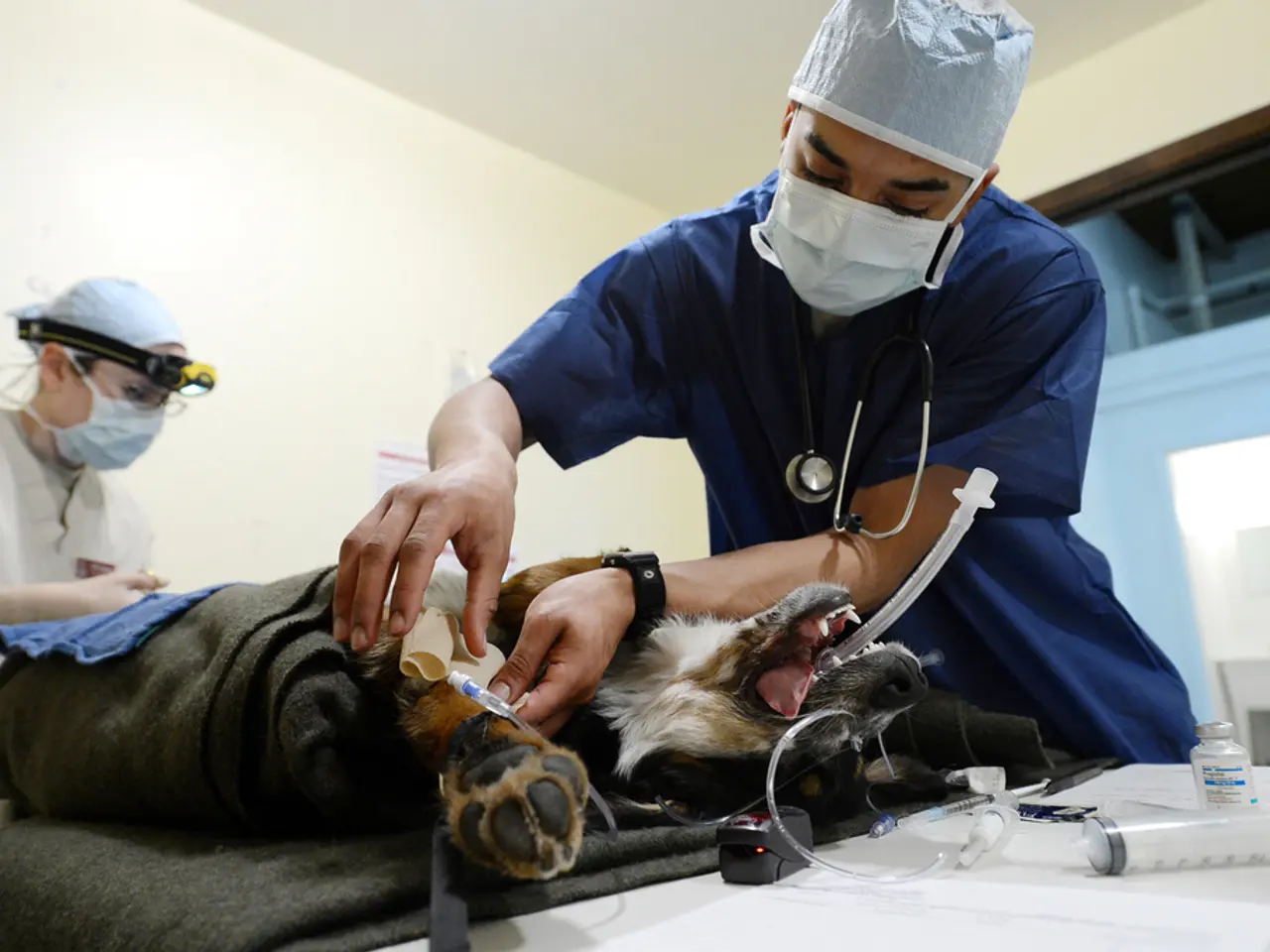Complications in Tracheostomy: Detailing Early and Late Issues
A tracheostomy is a medical procedure that involves the insertion of a tube into the trachea through a surgical opening in the neck. While this lifesaving procedure can significantly improve the quality of life for many individuals, it does come with potential complications.
In the immediate aftermath of a tracheostomy (within the first postoperative week), several issues may arise. These early complications include haemorrhage (bleeding), pneumothorax (air in the chest cavity), subcutaneous emphysema (air under the skin), cuff leak, respiratory or cardiac collapse, infection of the stoma (tracheostomy site), tube dislodgement or occlusion, formation of granulation tissue and stomal erosion, fistulae formation, tube displacement, and tracheitis. Early infection, bleeding, and tube displacement are frequently cited complications [1][2][3][4].
As time passes, and especially in patients with comorbidities, more long-term complications may emerge. These late complications include tracheal stenosis (narrowing of the trachea), tracheomalacia (weakening of the tracheal walls), tube obstruction or occlusion, tracheo-arterial or tracheo-esophageal fistula, aspiration risk, skin breakdown or pressure injuries around the stoma, and chronic infection such as tracheitis. Airway stenosis is noted as the most common late complication in adults, sometimes with life-threatening consequences [4]. Among pediatric populations, tracheitis is a very common late complication, occurring in up to 81% beyond the first postoperative week, along with high rates of stomal granuloma and airway stenosis [1][2][3][5].
It is crucial to emphasise the importance of proper care and maintenance of a tracheostomy site to help prevent complications and ensure optimal healing. Proper hygiene, tube care, secretion management, skin care, and showering are essential for tracheostomy site care and maintenance. Regular check-ups with healthcare professionals are also vital to monitor the tracheostomy site and address any potential issues promptly.
In summary, early issues mainly involve bleeding, infection, tube problems, and respiratory compromise, while late complications largely relate to structural airway changes, chronic infection, and tissue injury around the stoma and trachea [1][4]. The most common complication associated with tracheostomy is bleeding, with an incidence of around 5.6% in the UK population. Life-threatening situations with a tracheostomy can include blockage or dislodgment of the tracheostomy tube, severe respiratory infections, and choking on food, liquid, or secretions. Common tracheostomy complications include voice changes due to vocal cord dysfunction or scarring, stoma complications, and long-term complications such as tracheal narrowing or fistulas.
References:
[1] Khan, A., et al. (2016). Complications of tracheostomy: a review. Journal of Clinical Nursing, 25(11-12), 1906-1916.
[2] Khalaf, A. M., et al. (2017). Tracheostomy-related complications: a systematic review. Journal of Clinical Nursing, 26(1-2), 14-30.
[3] Liaw, J. Y., et al. (2018). Tracheostomy-related complications in critically ill patients: a systematic review and meta-analysis. Critical Care Medicine, 46(10), e906-e918.
[4] Raoof, S., et al. (2018). Tracheostomy-related complications: A systematic review. Journal of Critical Care, 47, 10-19.
[5] Wang, Y., et al. (2020). Tracheostomy-related complications in pediatric patients: A systematic review and meta-analysis. Journal of Pediatric Surgery, 55(4), 686-694.e1.
- Science has increasingly focused on neckandthroatsurgeries, particularly tracheostomies, to understand the various medical-conditions and chronic-diseases that may arise, such as tracheal stenosis and tracheomalacia, in patients following the procedure.
- Effective therapies-and-treatments for managing respiratory-conditions are essential for individuals who have undergone neckandthroatsurgeries like tracheostomies, as these patients are at risk of developing complications such as tracheitis or pneumothorax in the immediate postoperative week.
- Regular health-and-wellness checks are recommended for individuals with neckandthroatsurgeries, such as tracheostomies, to monitor for and promptly address complications arising from the procedure, including late complications like skin breakdown or chronic infection.




